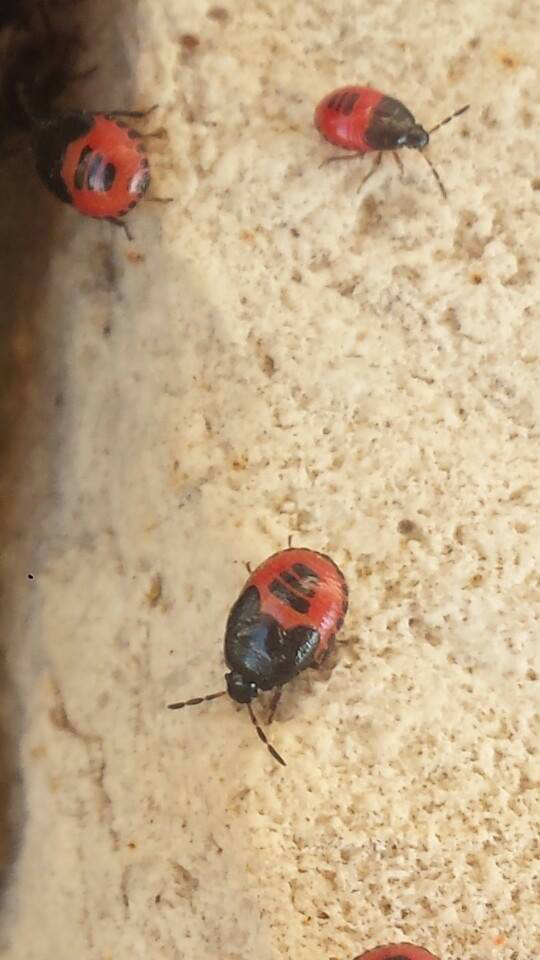
Sehirus cinctus nymphs clustered in a sidewalk joint. Photo courtesy of Zach Davis, Texas A&M AgriLife.
I’ve been receiving calls about a small red and black insect that is extremely common at the moment. It’s scientific name is Sehirus cinctus, but it is also known as the white-margined burrowing bug. Due to it’s commonness around Mother’s Day, and its motherly habits, I kind of like the name “Mother bug”, which I used in another post.
Several years ago I got a call from a graduate student doing a study on the unique behavior of these insects. He wanted to drive all the way from Notre Dame University to Texas to collect some of these bugs. It turns out that over the years the biology of mother bugs has captured the attention of a number of ecologists and scientists interested in insect social behavior.
The mother bug has an unusual habit (for an insect). After birth she hangs around the underground cell where she lays her eggs. Should a predator come by, in a selfless act of motherhood, she flings herself between the intruder and her eggs. Once the eggs hatch, she brings seeds for the little “buglets” to feed on, before she practices tough love and leaves them to fend for themselves.
After the mother leaves the nest, the young appear to stay together, sometimes in large clusters. The reports I’ve received involve seeing hundreds of the nymphs in the cracks of pavement. They are also common in the crack in the ground. I suspect that with some recent rains, and the swelling of the soil, many of these cute little insects are migrating to expansion joints in sidewalks and other pavement areas.
These insects are nothing to fear, and should not need any special attention. If you’re tempted to step on them, just remember this: “every bug has a mother too”.
